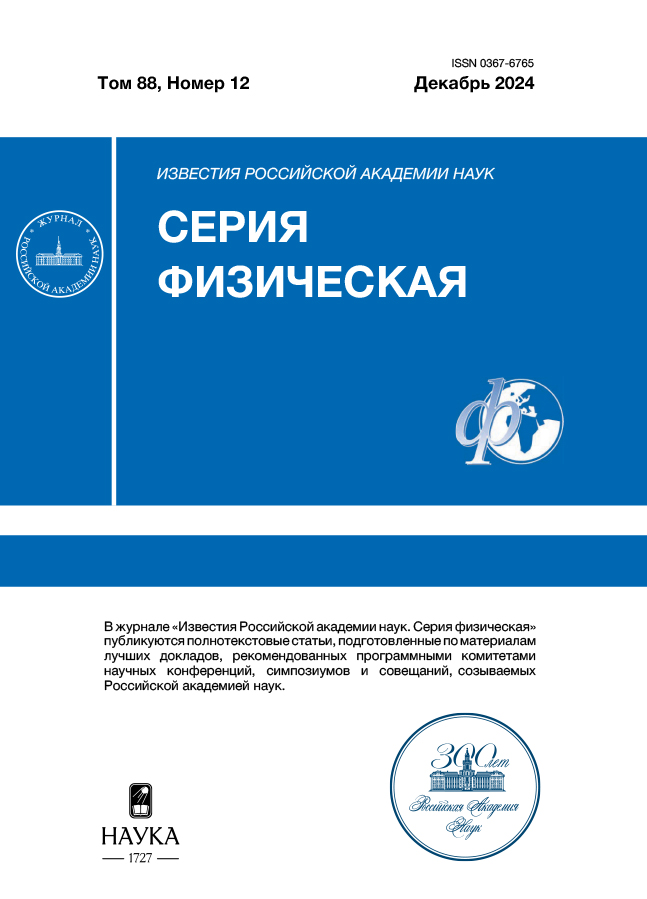3D microstructures for introducing radiation into photonic integrated circuits
- Autores: Kolymagin D.А.1, Prokhodtsov A.I.1,2, Chubich D.А.1, Matital R.P.1, Kazantseva A.V.1, Emelyanov D.P.1, Kovalyuk V.V.2,3, Vitukhnovsky A.G.1,4, Goltsman G.N.3,5
-
Afiliações:
- Moscow Institute of Physics and Technology (National Research University)
- National University of Science and Technology MISIS
- HSE University
- Lebedev Physical Institute of the Russian Academy of Sciences
- Russian Quantum Center
- Edição: Volume 88, Nº 12 (2024)
- Páginas: 2005-2010
- Seção: Nanooptics, photonics and coherent spectroscopy
- URL: https://edgccjournal.org/0367-6765/article/view/682313
- DOI: https://doi.org/10.31857/S0367676524120254
- EDN: https://elibrary.ru/EUKZUT
- ID: 682313
Citar
Texto integral
Resumo
One of the ways to implement high-performance data transmission and processing systems is photonic integrated circuits with improved optical input. The work examines the spectral dependences of 3D microstructures created by two-photon polymerization for inputting radiation in the range from 1480 to 1640 nm into photonic integrated circuits and makes a comparison with diffraction gratings.
Texto integral
Sobre autores
D. Kolymagin
Moscow Institute of Physics and Technology (National Research University)
Autor responsável pela correspondência
Email: kolymagin@phystech.edu
Rússia, Dolgoprudny
A. Prokhodtsov
Moscow Institute of Physics and Technology (National Research University); National University of Science and Technology MISIS
Email: kolymagin@phystech.edu
Rússia, Dolgoprudny; Moscow
D. Chubich
Moscow Institute of Physics and Technology (National Research University)
Email: kolymagin@phystech.edu
Rússia, Dolgoprudny
R. Matital
Moscow Institute of Physics and Technology (National Research University)
Email: kolymagin@phystech.edu
Rússia, Dolgoprudny
A. Kazantseva
Moscow Institute of Physics and Technology (National Research University)
Email: kolymagin@phystech.edu
Rússia, Dolgoprudny
D. Emelyanov
Moscow Institute of Physics and Technology (National Research University)
Email: kolymagin@phystech.edu
Rússia, Dolgoprudny
V. Kovalyuk
National University of Science and Technology MISIS; HSE University
Email: kolymagin@phystech.edu
Rússia, Moscow; Moscow
A. Vitukhnovsky
Moscow Institute of Physics and Technology (National Research University); Lebedev Physical Institute of the Russian Academy of Sciences
Email: kolymagin@phystech.edu
Rússia, Dolgoprudny; Moscow
G. Goltsman
HSE University; Russian Quantum Center
Email: kolymagin@phystech.edu
Rússia, Moscow; Skolkovo
Bibliografia
- Jalali B., Fathpour S. // J. Lightwave Technol. 2006. V. 24. P. 4600.
- Мусорин А.И., Шорохов А.С., Чежегов А.А. и др. // УФН. 2023. Т. 193. № 12. С. 1284, Musorin A.I., Shorokhov A.S., Chezhegov A.A. et al. // Phys. Usp. 2023. V. 66. No. 12. P. 1211.
- Бессонов В.О., Розанов А.Д., Федянин А.А. // Письма в ЖЭТФ. 2024. Т. 119. № 3—4. С. 257, Bessonov V.O., Rozanov A.D., Fedyanin A.A. // JETP Lett. 2024. V. 119. No. 4. P. 261.
- Mu X., Wu S., Cheng L., Fu H.Y. // Appl. Sciences. 2020. V. 10. P. 1538.
- Marchetti R., Lacava C., Carroll L. et al. // Photon. Res. 2019. V. 7. No. 2. P. 201.
- Cheng L., Mao S., Li Z. et al. // Micromachines. 2020. V. 11. P. 666.
- Camposeo A., Persano L., Farsari M. et al. // Adv. Opt. Mater. 2019. V. 7. No. 1. Art. No.1800419.
- Matital R.P., Kolymagin D.A., Pisarenko A.V. et al. // Phys. Wave Phenom. 2023. V. 31. No. 4. P. 217.
- Деменев А.А., Ковальчук А.В., Полушкин Е.А., Шаповал С.Ю. // Изв. РАН. Сер. физ. 2021. Т. 85. № 2. С. 212, Demenev A.A., Kovalchuk A.V., Polushkin E.A., Shapoval S.Yu. // Bull. Russ. Acad. Sci. Phys. 2021. V. 85. No. 2. P. 159.
- Gehring H., Eich A., Schuck C., Pernice W.H. // Opt. Letters. 2019. V. 44. No. 20. P. 5089.
- Витухновский А.Г., Звагельский Р.Д., Колымагин Д.А. и др. // Изв. РАН. Сер. физ. 2020. Т. 84. № 7. С. 927, Vitukhnovsky A.G., Zvagelsky R.D., Kolymagin D.A. et al. //. Bull. Russ. Acad. Sci. Phys. 2020. V. 84. No. 7. P. 760.
- Колымагин Д.А., Чубич Д.А., Щербаков Д.А. и др. // Изв. РАН. Сер. физ. 2023. Т. 87. № 12. С. 1695, Kolymagin D.A., Chubich D.A., Shcherbakov D.A. et al. // Bull. Russ. Acad. Sci. Phys. 2023. V. 87. No. 12. P. 1779.
- Matital R.P., Kolymagin D.A., Chubich D.A. et al. // J. Sci. Adv. Mater. Dev. 2022. V. 7. No. 2. Art. No. 100413.
- Schmid M., Ludescher D., Giessen H. // Opt. Mater. Express. 2019. V. 9. No. 12. P. 4564.
Arquivos suplementares















